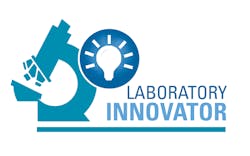Based on your professional experience and research focus on coagulation assays, rare hemoglobin variants, sickle cell disease, and diabetes, what led you to your current position?
A lot of it was my work on coagulation and hemoglobin variants. The Bronx, NY, has one of the most diverse populations in the world, and with that comes interesting variants every week, as well as the very needed work to support my colleagues in our sickle cell clinics. For coagulation, former Hematology and Coagulation Director Morayma Reyes Gil, MD, PhD, is one of the foremost experts on coagulation. The chance to work with her and pursue research and work in hemoglobinopathies was too good to pass up.
Will you describe your role as the associate director of clinical chemistry at Montefiore?
I have moved from the hematology and coagulation laboratory to chemistry. Now, my clinical work is to ensure the smooth operation of the chemistry laboratories, ensure that all assays and instruments are operating as they should, and to decide what tests to offer to our clinicians. In addition, I also teach residents when they are on service and engage in research on sickle cell disease, hemoglobinopathies, and diabetes.
In the area of sickle cell disease, will you briefly describe the gene therapies now being tested to combat this disease?
There are three main techniques currently under investigation, all related to bone marrow transplantation. Bone marrow transplantation is already used in some cases to treat sickle cell disease by replacing much of the patient’s erythropoietic stem cells with those from a healthy donor. This results in a phenotype closer to sickle cell trait, the asymptomatic carrier status. However, this carries all the usual risks of graft rejection. In contrast, editing techniques can be done on the patient’s own stem cells, eliminating issues of rejection. Some gene editing techniques deliver a new, wild-type beta gene (or an ‘improved’ gene with anti-sickling properties) that can be expressed alongside the sickle mutated gene in the patient’s stem cells, typically using lentiviral vectors. CRISPR techniques, conversely, focus on editing the chromosomes to reverse the disease. One way under investigation is to edit the sickle cell gene back to wild type, reversing the disease or changing them to a sickle trait phenotype. And a last technique involves editing the genes involved in the production of gamma globulin, the protein in fetal hemoglobin (HbF), with CRISPR. This would induce a phenotype similar to Hereditary Persistence of Fetal Hemoglobin, or HPFH, by increasing production of gamma and lowering production of the mutated beta gene, which can have a highly protective effect in sickle cell disease patients and also result in a sickle-trait like phenotype at high enough levels.
Have there been advances in diagnostic testing to monitor sickle cell disease? If so, what are they?
There has not been a large change in diagnostic testing for sickle cell disease and hemoglobinopathies. The last major advance I know of is the introduction of capillary zone electrophoresis for diagnosis and management, which was brought into the clinical lab about a decade ago. For sickle disease monitoring, this has similar utility to HPLC techniques, which have been used in the clinical lab for several decades. Most of the above treatments can be monitored using either, which would test for new beta or gamma globulins. For the diagnosis of disease, the use of both CZE and HPLC has several advantages, in my opinion. It should be noted that diagnosis of sickle cell disease (or other hemoglobinopathies) should always be done with at least two techniques, as there are many hundreds of different mutations to hemoglobin, many of which look identical to sickle cell disease or trait if only one technique is used. For this reason, the College of American Pathologists (CAP) specifically mandates the use of two different techniques for the diagnosis of sickle cell disease. The HPLC/CZE combination is newer, as CZE is newer, and many labs including my own now use this. Much like treatments for sickle cell disease, much less attention has been paid to the diagnosis and monitoring of sickle cell disease than for other diseases, despite its status as one of the most common monogenic diseases in the world.
You edit the reference interval table in MLO’s annual CLR buying guide. Why are these reference intervals important? How have they evolved over time?
These reference interval tables are important because they help to provide an easy guide for some of the most common standardized refence intervals for labs to look at when starting to establish reference intervals at their own sites or to check that they are in line with other laboratories. Reference intervals are important because they are used, in a rough sense, to help determine when a patient is or is not having any abnormalities. Choosing the right intervals for a given population can be hugely important for ensuring both that disease is caught, and that healthy patients are not incorrectly labeled with a potential issue. Over the years, ranges have changed, as we’ve either expanded our pool of ‘normal’ patients, determined previously unknown early signs of disease, or if there were large shifts in the methodologies used for an assay, which happen occasionally.

